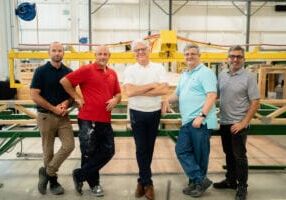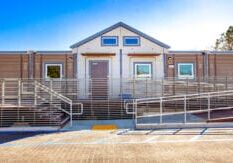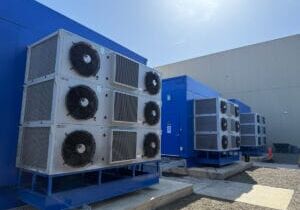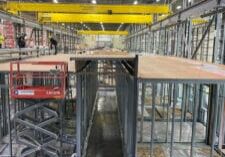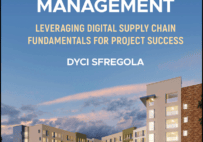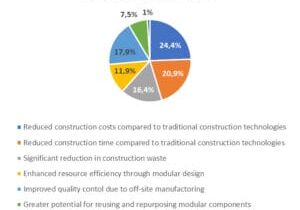Building Skills in a Virtual World: Immersive Training for the Modern Workforce

Stephen Elms is a PhD candidate at The Bartlett Faculty of the Built Environment at University College London. His research focuses on workforce skill development in offsite construction, with an emphasis on vocational education and training.
In the opening moments of Steven Spielberg’s 2018 epic sci-fi Ready Player One, the main character, Parzival, introduces us to the virtual world known as OASIS. He describes it as “a place where the limits of reality are your imagination.” This not-too-distant future of an immersive universe filled with games, fantasy, and adventure is often how we are introduced to technologies like Extended Reality (XR), which includes Virtual Reality (VR), Augmented Reality (AR), Mixed Reality (MR), and Tangible User Interfaces (TUI). When Ready Player One was first published in 2011, author and screenwriter Ernest Cline’s rich, immersive worlds—described through futuristic technology—were little more than a daydream.
Fast-forward a dozen years, and such science fiction has not only become reality, but is also relatively affordable. In 2024, both Meta (formerly Facebook) and Apple have released high-end consumer headsets that blend VR and AR—the Quest 3s and the Vision Pro, respectively. Most smartphones and tablets are AR-capable, with games like Pokémon Go.
It might seem like a stretch to connect a blockbuster film and a mobile game—one your kids probably cannot put down—to modular offsite construction. However, as we will explore, the real connection lies in the potential for gamified, immersive worker training that can be equally engaging.
As both the hardware and software for developing and deploying XR applications continue to become more affordable, the investment in this technology as a training tool is increasingly appealing. XR also offers several other benefits, including performing potentially hazardous tasks in a safe environment and acquiring new skills without the immediate need for physical materials. To better illustrate this, we will examine four academic studies that utilized XR technology—highlighting the benefits of each type: VR, AR, MR, and TUI—in training workers within the construction industry.
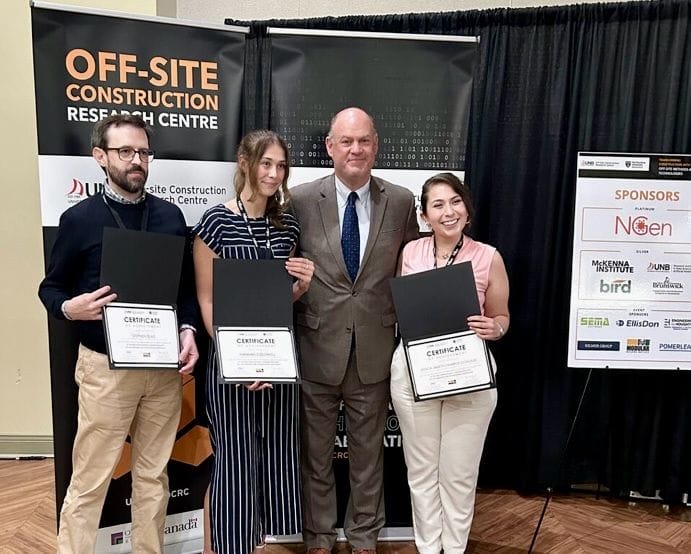
Stephen Elms was one of three award winners at the 2024 Transforming Construction with Off-site Methods and Technologies conference, presented by the University of New Brunswick’s Off-site Construction Research Centre and sponsored by the Modular Building Institute.
As both the hardware and software for developing and deploying XR applications continue to become more affordable, the investment in this technology as a training tool is increasingly appealing. XR also offers several other benefits, including performing potentially hazardous tasks in a safe environment and acquiring new skills without the immediate need for physical materials. To better illustrate this, we will examine four academic studies that utilized XR technology—highlighting the benefits of each type: VR, AR, MR, and TUI—in training workers within the construction industry.
Terms
Before diving into the case studies, it is important to understand the different types of XR technologies that are transforming worker training in construction. Many readers are probably already familiar with VR and AR, as these are the most common and accessible forms of XR. You have likely encountered VR in Hollywood depictions (as discussed earlier), or even in theme parks, where it is being incorporated into existing attractions and standalone rides—such as Disney’s Star Wars: The Secrets of the Empire. Generally, consumer headsets are becoming more common for gaming, watching movies, or even exploring the metaverse. Similarly, aside from mobile games, AR is used by companies like Amazon and Ikea, allowing you to view how products would look in your home through your phone or tablet.
These examples offer helpful context, but what truly sets these technologies apart is how users engage with their environments. Each interface creates a different kind of interaction and immersion.
VR creates a fully immersive digital environment, where users interact as if physically present by wearing headsets that block out the real world. This allows them to engage with simulations or experiences in a controlled virtual space. AR, on the other hand, overlays digital information onto the real world, enhancing your physical surroundings with additional layers of content. AR is most often experienced through smartphones, tablets, or AR glasses.
MR takes this immersion a step further by seamlessly blending both the physical and digital worlds in real time. This enables users to interact with both environments simultaneously, allowing digital objects to coexist and respond to the physical world. Finally, TUI introduces a hands-on approach, where physical objects are used to manipulate digital information. This allows users to interact with tangible items that control digital outcomes, creating a more intuitive, physical connection to digital content.
If the differences between these technologies still seem unclear, the upcoming case studies will provide greater clarity as we explore how each is applied in worker training.
Case Study: Virtual Reality for Construction Safety Training
In a study conducted by a team of German and Danish researchers (Jelonek et al., 2022), VR was explored as a tool for improving safety training in the construction industry. With 97 fatal accidents reported in the German construction sector in 2020 alone, the need for more effective training methods is necessary. The study aimed to address this by creating immersive simulations where workers could experience dangerous situations without real-world risks. The VR simulation guided participants—many of whom were already familiar with basic safety protocols—through a range of tasks. Along the way, they encountered various hazards, from selecting the right personal protective equipment (PPE) to avoiding slick surfaces on the job site. The simulation provided instant feedback, restarting whenever mistakes were made—much like resetting a level in a video game—giving workers the opportunity to safely learn through experience.
According to the researchers (Jelonek et al., 2022), workers who trained using VR showed a noticeable improvement in their understanding of safety procedures, especially with specific tools like the angle grinder. Beyond knowledge, many participants expressed a greater sense of confidence and awareness after their virtual experience. Some even preferred the immersive, hands-on nature of VR over traditional training methods. However, the study also underscored the importance of accuracy—any gaps or inaccuracies in the simulation could lead to the wrong lessons being learned.

Case Study: Augmented Reality in Construction Education
At the University of Florida’s School of Construction Management, researchers investigated the use of AR to enhance students’ understanding of complex construction processes (Shanbari et al., 2016). The focus was on how AR could help students grasp the spatial and timing constraints involved in masonry and roofing assemblies—an area often difficult to convey through traditional classroom methods.
The study used AR to superimpose virtual building elements onto real-world video footage of a construction site. This allowed students to visualize hidden details of masonry and roof construction that might otherwise be difficult to observe. The goal was to simulate the kind of job site exposure typically limited to field trips or internships, both of which are frequently disconnected from the specific topics being taught in the classroom.
Students who were exposed to AR-enhanced videos showed improved comprehension of key elements like masonry wall ties and flashing, as well as the sequencing involved in assembling roofing systems (Shanbari et al., 2016). The immersive nature of AR helped bridge the gap between theoretical knowledge and practical understanding, offering a more interactive learning experience. While the technology was found to be a valuable supplement to traditional teaching methods, it was not intended to fully replace them. The study concluded that integrating AR into construction management education has strong potential to deepen students’ understanding of complex processes, preparing them more effectively for the demands of the industry.

Case Study: Mixed Reality for Construction Education
At Bond University in Australia, researchers explored the potential of mobile mixed reality (MMR) to enhance construction education (Vasilevski & Birt, 2020). With the growing adoption of building information modeling (BIM) in the architecture, engineering, and construction (AEC) industries, the study aimed to determine if MMR could improve students’ understanding of complex construction processes by creating immersive learning environments.
The study used a combination of mobile devices and MMR technologies, such as the Microsoft HoloLens, to create interactive simulations. These tools allowed students to engage with both virtual and real-world elements, providing a more dynamic learning experience. Unlike traditional classroom methods, where students often struggled to visualize the spatial and timing constraints of construction projects, MMR enabled them to interact with 3D models and simulations in real time. This approach not only made the learning experience more hands-on but also fostered greater engagement and motivation among the students.
The results were promising (Vasilevski & Birt, 2020). Students reported feeling more connected to the material and better able to comprehend the complexities of construction management tasks. Many participants highlighted the increased motivation and engagement that came from the interactive, gamified nature of MMR.
However, the study also noted some technical challenges, such as motion sickness experienced by a small percentage of users. Overall, the researchers concluded that MMR has significant potential to enhance learning outcomes by bridging the gap between theoretical knowledge and practical, real-world application.

Case Study: Tangible User Interfaces for Carpenter Apprentices
In a joint research effort between the Swiss Federal Institute of Technology, the Swiss Federal Institute for Vocational Education, and Stanford University, researchers explored how TUIs could enhance the spatial skills of carpenter apprentices (Cuendet et al., 2014). Spatial skills are crucial in the carpentry profession, as tasks often require the ability to visualize and manipulate objects in three dimensions based on two-dimensional plans. The study aimed to assess whether TUIs—interfaces that allow users to interact with digital information through physical objects—could improve apprentices’ spatial reasoning and practical skills.
Using TUI technology, apprentices engaged in hands-on activities that mirrored the traditional methods of learning in vocational education. By manipulating physical objects, the apprentices were able to interact with digital models, offering a bridge between theory and practice. This approach allowed them to develop spatial skills in a more intuitive, interactive way, which is particularly important in carpentry where understanding spatial relationships is key.
The results showed that apprentices with access to TUI-enhanced training had a higher level of spatial skill development compared to those who relied on traditional learning methods alone (Cuendet et al., 2014). The study also noted that these tools could help bridge the gap for apprentices whose spatial skills might not be as strong initially, offering a more inclusive and effective approach to skill development. Overall, the use of TUIs in vocational training holds promise as a method to enhance both learning and practical application in trades that require high levels of spatial intelligence.
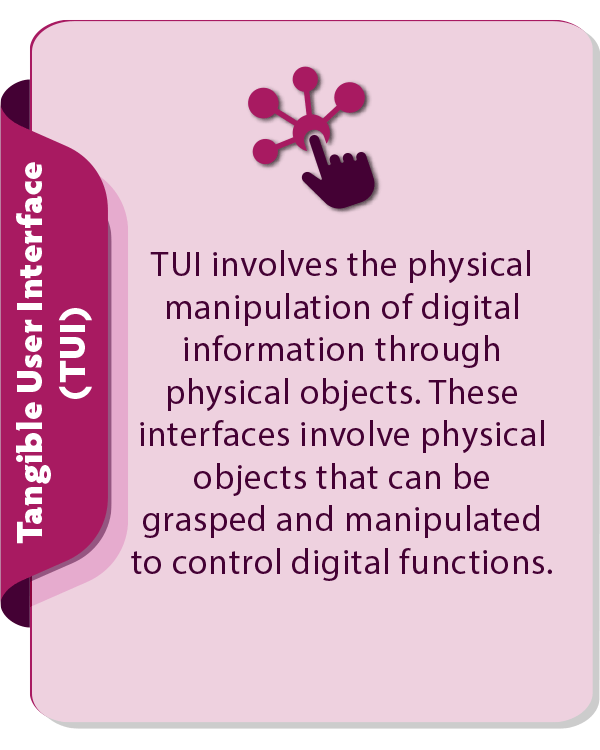
Conclusion: The Future of XR in Offsite Construction Training
The case studies presented, while not directly related to offsite construction, provide clear examples of how XR technologies—whether VR, AR, MR, or TUI—are already transforming worker training across various construction sectors. These technologies offer immersive, interactive learning experiences that bridge the gap between theory and practice, allowing workers to develop crucial skills in a safe, controlled environment. As the offsite construction industry embraces automation and robotics, these technologies offer a natural complement to the skills required for managing and operating advanced systems.
However, the academic literature has yet to fully explore how XR can be applied specifically to offsite construction training. This is an area that researchers, including myself, are just beginning to investigate. The potential is vast—XR could revolutionize how workers are trained to handle the complexities of offsite construction, from factory-based production to the onsite assembly of modular components. The integration of XR with automation and robotics represents a significant opportunity for innovation in both training and operational efficiency.
As we move forward, there is a growing need for collaboration between academia and industry to unlock the full potential of XR in this space. By working together, we can develop training solutions that not only meet the evolving needs of the workforce but also push the boundaries of what is possible in offsite construction. The future of worker training in this industry is immersive, interactive, and filled with opportunity—and XR stands at the forefront of this transformation.
Bibliography
Cuendet, S., Dehler-Zufferey, J., Arn, C., Bumbacher, E., & Dillenbourg, P. (2014). A Study of Carpenter Apprentices’ Spatial Skills. Empirical Research in Vocational Education and Training, 6(1), 1–16. https://doi.org/10.1186/s40461-014-0003-3
Jelonek, M., Fiala, E., Herrmann, T., Teizer, J., Embers, S., König, M., & Mathis, A. (2022). Evaluating Virtual Reality Simulations for Construction Safety Training. I-Com, 21(2), 269–281. https://doi.org/10.1515/icom-2022-0006
Shanbari, H., Blinn, N., & Issa, R. R. A. (2016). Using Augmented Reality Video in Enhancing Masonry and Roof Component Comprehension for Construction Management Students. Engineering Construction and Architectural Management, 23(6), 765–781. https://doi.org/10.1108/ecam-01-2016-0028
Vasilevski, N., & Birt, J. (2020). Analysing construction student experiences of mobile mixed reality enhanced learning in virtual and augmented reality environments. Research in Learning Technology, 28(0). https://doi.org/10.25304/rlt.v28.2329
More from Modular Advantage
Resia: Breaking All the Rules
Resia Manufacturing, a division of U.S.-based Resia, is now offering prefabricated bathroom and kitchen components to industry partners. Its hybrid fabrication facility produces more precise bathroom and kitchen components (modules) faster and at lower cost than traditional construction. Here’s how Resia Manufacturing does it.
How LINQ Modular Innovates to Bring Modular To The Market in the UAE and Beyond
LINQ Modular, with an office and three manufacturing facilities in Dubai, is a modular firm based in United Arab Emirates. The company is on a mission: to break open the housing and construction markets in the Gulf Cooperation Council (GCC) area with modular.
ModMax: Redefining Modular Construction with Confidence and Precision
ModMax was born out of frustration—frustration with five persistent pain points in modular construction: Permitting bottlenecks. Production delays. Rigid designs. Disconnect between “the office” and the field. Lack of transparency and communication.
LifeArk: Disaster-Resilient Housing from Recycled Plastic and 100-year-old Technology
Wee compares LifeArk’s housing units to Yeti coolers, as they are built similarly. Each component takes 15 to 20 minutes to manufacture, has an R-value of 40, and includes molded slots and chases for wiring, plumbing, fire sprinklers, and other utilities.
Building the Future of Modular Edge Infrastructure
The edge data center market is expanding rapidly, driven by the surge in AI workloads, IoT adoption, and the need for localized compute power. In these environments, sustainability, scalability, and reliability are non-negotiable. Cooling is among the most complex challenges for operators—and one of the most decisive factors in long-term success.
Accelerating Light-Gauge Steel Construction: A Semi-Automated Digital Workflow for Off-Site Projects
For construction professionals, the message is clear. By adopting semi-automation and digitalization, companies can deliver projects faster, more accurately, and more profitably, while also building stronger collaboration across teams. The approach is not about replacing people with machines, but about empowering people with better tools and processes.
Why Modular Data Centers Are Gaining Momentum
Artificial intelligence, high-performance computing, and edge applications push the limits of traditional “stick-built” data centers. They take years build, often struggle with high density workloads, and aren’t optimized for deployments near end users. Modular data center platforms are purpose-built to address these challenges, offering flexibility and scalability to adapt to evolving technologies, while opening new opportunities for the modular construction industry.
Supply Chain Innovation in Action: 5 Habits Every Modular Leader Should Practice
By applying these principles to supply chain practices — collaborative planning, strategic procurement, scenario modeling, digital tools, and transparent forecasting — construction leaders can build value chains that are not just efficient and agile, but truly innovative.
Exploring the Role of Modular Integrated Construction (MiC) in Advancing Circular City Principles – A Survey of Stakeholder Perspectives
The survey findings highlight the significant potential of Modular integrated Construction (MiC) in advancing the development of circular cities. By reducing costs, accelerating construction timelines, and minimizing waste generation, MiC offers a promising approach to sustainable urban development.
The Use of MS POLYMER™-Based Sealants and Adhesives in Modular Building
These products combine flexibility and elastic recovery with excellent adhesion to different substrates and have already shown their usefulness in traditional construction. Now it’s time for them to be put to use in the modular construction industry.



